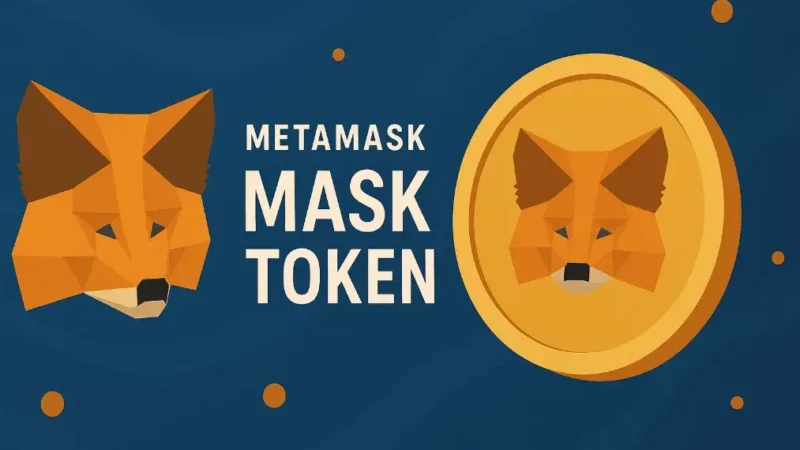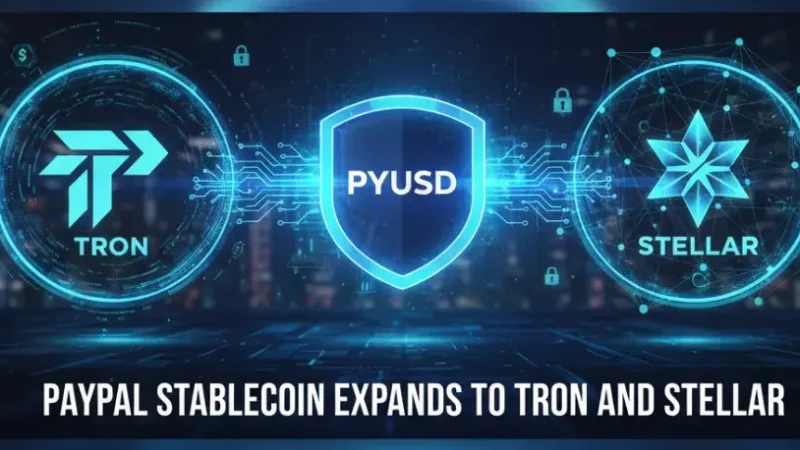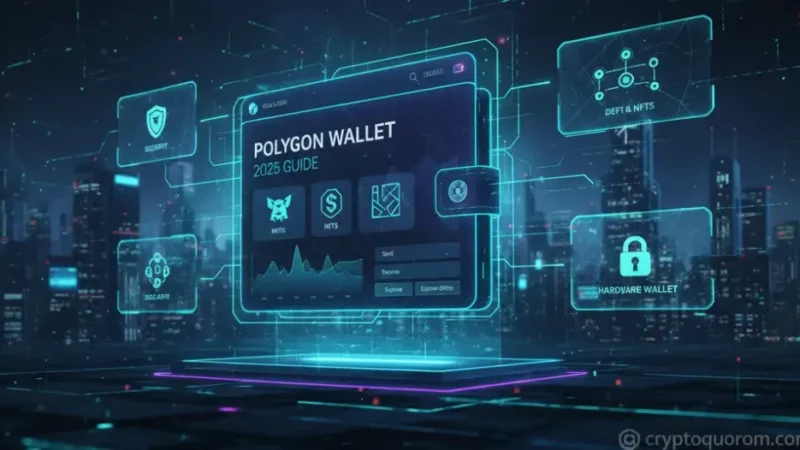What Is Decentralized Applications (dApps)?

In the rapidly evolving digital landscape, applications are an integral part of our daily lives. From social media to banking, we rely on software to connect, transact, and manage our information. Traditionally, these applications have been centralized, meaning they are controlled by a single entity, company, or server. However, a new paradigm is emerging: decentralized applications, or dApps. These innovative tools are built on blockchain technology, offering a fresh approach to digital interaction that prioritizes transparency, security, and user control.
Understanding the Core Concept of dApps
At its heart, a dApp is an application that runs on a peer-to-peer (P2P) network, typically a blockchain, rather than a centralized server. This fundamental difference is what gives dApps their unique characteristics and advantages. Instead of relying on a single point of control, the operations and data of a dApp are distributed across numerous nodes within the network. This distributed architecture ensures that no single entity can control or censor the application, making it resistant to downtime and external interference.
The backend logic of most dApps is powered by smart contracts—self-executing agreements with the terms directly written into code. These smart contracts automate processes and transactions, eliminating the need for intermediaries. When a user interacts with a dApp, the smart contract ensures that the predefined rules are followed, guaranteeing the validity and integrity of the interaction without requiring trust in a third party.
How dApps Differ from Traditional Applications
To truly grasp the significance of dApps, it’s helpful to compare them with the centralized applications we use every day.
Centralization vs. Decentralization
Traditional applications, like your favorite social media platforms or banking apps, operate on centralized servers owned and managed by a single company. All user data and interactions flow through these servers. This model allows for efficient processing and scalability, but it also comes with inherent risks. If the central server is compromised, the entire application can fail, and user data can be vulnerable to breaches or censorship.
In contrast, dApps run on a distributed network of computers (nodes). Each node contributes to the network, sharing the responsibility of managing the blockchain and running the application. This eliminates a single point of failure, making dApps more resilient and secure. If one or even multiple nodes go offline, the dApp remains operational because other nodes continue to maintain the network.
Data Ownership and Control
With traditional applications, the company that owns the application also owns and controls your data. This means they can collect, store, and even monetize your personal information. Users often have limited say in how their data is used, and their accounts can be suspended or censored at the discretion of the central authority.
dApps, by design, give users greater ownership and control over their data and digital assets. Since data is stored on an immutable blockchain, it cannot be altered or tampered with by any single party. Users typically interact with dApps using a crypto wallet, which provides a unique cryptographic signature, ensuring privacy and control over their funds and identity without revealing personal information to a central entity.
Intermediaries and Costs
Traditional transactions often involve intermediaries like banks or payment processors, which can lead to additional fees, delays, and restrictions, especially for cross-border transactions.
dApps bypass these intermediaries, enabling direct peer-to-peer interactions. This can result in lower transaction costs, faster processing times, and increased financial inclusion, particularly for the unbanked or underbanked populations. The automation provided by smart contracts further enhances efficiency by removing manual processes and third-party oversight.
Transparency and Immutability
One of the most compelling features of dApps is their inherent transparency. Because they operate on public blockchains, all transactions and activities within a dApp are recorded on a public ledger and are verifiable by anyone. This transparency significantly reduces the risk of fraud and corruption, as all actions are traceable and immutable. Once data is added to the blockchain, it cannot be changed or deleted, ensuring the integrity of information.
Key Benefits of Decentralized Applications
The decentralized nature of dApps brings forth a host of advantages that are reshaping various industries:
Enhanced Security
dApps leverage the cryptographic features of blockchain technology, making them highly secure and resistant to hacking or unauthorized access. The distributed nature means there’s no single point of failure for attackers to target. Data is encrypted and spread across multiple nodes, making it incredibly difficult for malicious actors to compromise the system.
Increased Transparency and Trust
The public and immutable nature of blockchain ensures that all transactions and data are transparent and verifiable. This fosters a high degree of trust among users, as they can independently verify the authenticity of operations and data without relying on a central authority. This is particularly crucial in financial applications where trust is paramount.
Censorship Resistance
Since no single entity controls a dApp, it is highly resistant to censorship. Governments or corporations cannot easily shut down or restrict access to a dApp, ensuring that users maintain freedom of expression and access to services, even in challenging environments.
User Control and Privacy
dApps empower users with greater control over their data and digital identities. Users manage their private keys, which are essential for accessing their assets and data. Many dApps allow for anonymous interaction, enhancing privacy by not requiring personal information to be revealed.
Reduced Downtime
The distributed network ensures that dApps have no single point of failure. Even if some nodes experience issues, the application continues to run seamlessly on the remaining operational nodes, leading to near-zero downtime.
Interoperability
Many dApps are designed to be interoperable, meaning they can interact with other applications and services across different blockchain networks. This opens up opportunities for collaboration and the creation of complex, interconnected ecosystems.
Challenges Faced by dApps
Despite their numerous advantages, dApps are still in their early stages of development and face several challenges that need to be addressed for widespread adoption:
Scalability Issues
One of the most significant hurdles for dApps is scalability. Current blockchain networks, particularly those with a high degree of decentralization, can struggle to handle the transaction volumes that centralized applications manage. This can lead to network congestion, slower transaction speeds, and higher gas fees during peak times. Solutions like Layer 2 scaling (e.g., optimistic rollups, zk-rollups) and sharding are being developed to mitigate these issues.
User Experience (UX)
Many dApps still have complex user interfaces that can be intimidating for mainstream users accustomed to the polished and intuitive designs of traditional apps. Improving UX is crucial for broader adoption, requiring developers to focus on simplicity, consistency, and ease of use.
Security Vulnerabilities
While dApps offer enhanced security due to decentralization, they are not immune to vulnerabilities, especially in their smart contract code. Bugs or flaws in smart contracts can be exploited by hackers, leading to significant financial losses, as seen in various decentralized finance (DeFi) exploits. Regular security audits and best practices in coding are essential.
Regulatory Uncertainty
The decentralized and borderless nature of dApps poses challenges for traditional regulatory frameworks. Governments and regulatory bodies are still grappling with how to classify and oversee dApps, leading to legal uncertainties that can hinder development and adoption.
Interoperability Between Blockchains
While efforts are being made, seamless interoperability between different blockchain networks remains a challenge. This can limit the ability of dApps to communicate and share assets across diverse ecosystems, potentially fragmenting the decentralized landscape.
Real-World Examples of dApps
dApps are already making significant inroads across various sectors, demonstrating their potential to revolutionize digital services:
Decentralized Finance (DeFi)
DeFi is perhaps the most prominent sector for dApps. These applications aim to recreate traditional financial services in a decentralized manner.
- Uniswap: A decentralized exchange (DEX) that allows users to swap cryptocurrencies without the need for a centralized intermediary.
- Aave: A lending and borrowing protocol where users can earn interest on their crypto deposits or borrow assets against collateral.
- MakerDAO: Enables users to generate DAI, a stablecoin, by locking up cryptocurrency collateral.
Gaming and NFTs
Blockchain-based games and NFT marketplaces are transforming digital ownership and in-game economies.
- Axie Infinity: A popular play-to-earn game where players collect, breed, and battle NFT creatures called Axies, earning cryptocurrency rewards.
- Decentraland: A virtual world powered by Ethereum where users can buy, sell, and build on virtual land, creating and monetizing content.
- OpenSea: The largest NFT marketplace, allowing users to buy, sell, and trade a wide range of non-fungible tokens.
Social Media
dApps are emerging as alternatives to centralized social media platforms, aiming to give users more control over their data and content.
- Steemit: A blockchain-based blogging and social media platform that rewards users with cryptocurrency for creating and curating content.
Other Categories
dApps are also being developed for a variety of other use cases:
- File Storage: Platforms like Filecoin and Storj offer decentralized cloud storage solutions.
- Identity Management: dApps such as Civic and uPort focus on self-sovereign identity, allowing users to control and protect their personal information.
- Supply Chain Management: dApps like VeChain enhance traceability and transparency in supply chains, tracking goods from production to delivery.
Stay informed, read the latest crypto news in real time!
The Future of dApps
The dApp ecosystem is still nascent but is growing at an incredible pace. As blockchain technology matures and solutions to current challenges like scalability and UX improve, dApps are poised for wider adoption. We can expect to see:
- Increased Adoption of Layer 2 Solutions: These will enhance transaction speeds and reduce costs, making dApps more user-friendly.
- Integration of AI: AI can personalize experiences and automate processes within dApps, particularly in DeFi.
- Enhanced User Experience: Developers will continue to prioritize intuitive designs to attract a broader audience.
- Regulatory Clarity: As governments establish clearer regulations, dApps will integrate more seamlessly into mainstream industries.
- Greater Interoperability: Cross-chain solutions will allow dApps to operate across different blockchain networks, fostering a more connected ecosystem.
While dApps may not entirely replace centralized applications, their unique advantages in security, transparency, and user control position them as a transformative force in the digital economy. They represent a significant step towards a more open, equitable, and decentralized internet, empowering users and reshaping how we interact with technology. The journey of dApps is just beginning, and their evolution promises a future where digital interactions are more secure, transparent, and user-centric.




6 thoughts on “What Is Decentralized Applications (dApps)?”